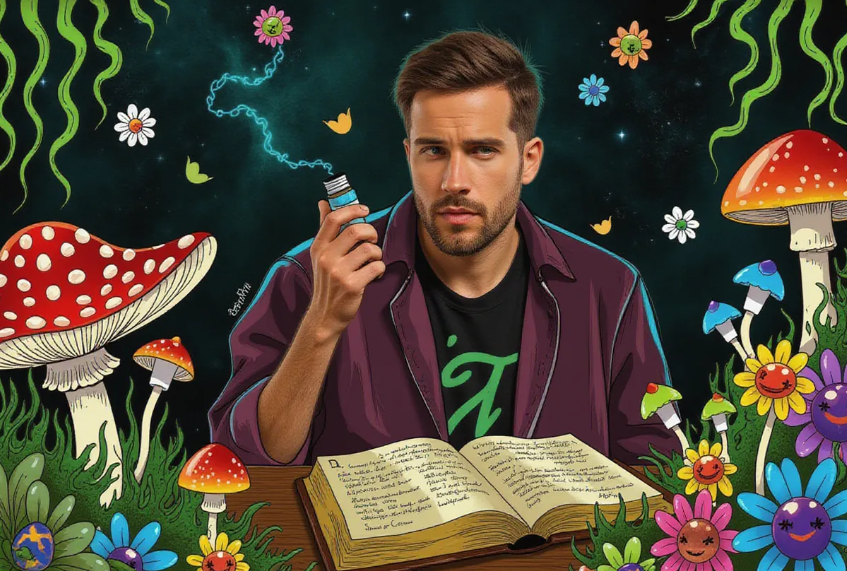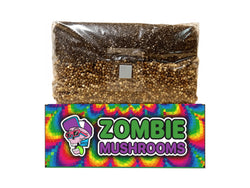⬇️ Prefer to listen instead? ⬇️
- Changa contains DMT paired with MAOI herbs, resulting in deeper, prolonged psychedelic experiences.
- Illicitly sourced Changa may be contaminated with dangerous synthetic substances.
- Changa often induces ego dissolution and spiritual visions aligned with entheogenic experiences.
- DMT is classified as a controlled substance in most countries, making Changa illegal or legally ambiguous.
- Proper integration of Changa experiences enhances long-term psychological benefits.

Changa DMT: Is It Safe to Smoke?
Changa, often referred to as “smokable ayahuasca,” is a potent blend of natural herbs infused with N,N-Dimethyltryptamine (DMT) and monoamine oxidase inhibitors (MAOIs), offering a unique psychedelic experience. Though celebrated for its accessibility, shorter duration, and spiritual insights, Changa also carries its own set of health risks, legal complications, and ethical considerations. Whether you are looking at it for healing, self-discovery, or mystic curiosity, understanding the pharmacology, methods, and cultural impact of Changa is important for safe and respectful use.

What Is Changa (a.k.a. Changa DMT)?
Changa DMT is a smokable psychedelic preparation that combines freebase DMT with MAOI-containing herbs. The central purpose behind this mixture is to extend and deepen the intense—but brief—effects of freebase DMT by inhibiting the enzymes (monoamine oxidase) that usually metabolize DMT quickly in the body.
DMT, or N,N-Dimethyltryptamine, is a naturally occurring tryptamine found in hundreds of plant species and even mammals, including the human brain in trace amounts. It is known for causing very vivid, immersive, and spiritual experiences.
The addition of herbs such as Banisteriopsis caapi (ayahuasca vine), Syrian rue (Peganum harmala), or even mundane herbs like blue lotus or peppermint doesn’t just help create a smoother smoking experience—they also serve specific biological and spiritual purposes. MAOIs like harmine and harmaline (from B. caapi or Syrian rue) slow down the body's metabolism of DMT, routinely extending experiences from a brief 5-10 minutes to sometimes over 30 minutes.
Origin of Changa
The term “Changa” was first coined by Julian Palmer, an Australian psychonaut and herbal alchemist, in the early 2000s. Palmer was experimenting with various combinations of herbs and DMT extracts to soften the rapid, often overwhelming trip induced by smoking freebase DMT. Over time, his creation gained popularity as a more approachable, layered form of DMT use—offering users a bridge between pure vaporized DMT and ceremonial ayahuasca experiences.
However, it should be noted that indigenous Amazonian cultures have long consumed DMT with MAOIs in oral brews like ayahuasca. Looking at it this way, Changa is a modern form of ancient practices, changing from long shamanic ceremonies to individual, short uses.

How Is Changa Made?
Step-by-Step Process
Crafting Changa involves a nuanced process that carefully balances potency, safety, and desired effects. Here’s how it’s typically produced
- Extract DMT: Start with a DMT-containing plant source such as Mimosa hostilis (jurema), Acacia confusa, or Psychotria viridis. The plant material undergoes a complex solvent-based extraction, usually involving nonpolar solvents like naphtha and subsequent acid/base washes to isolate pure, crystalline DMT.
-
Select Herbal Blend: Choose herbs for both pharmacological (MAOI) and experiential qualities. Common herbs include:
- Banisteriopsis caapi (MAOI-rich)
- Syrian rue (MAOI-rich)
- Passionflower (mild MAOI effects)
- Blue lotus (euphoric properties)
- Mullein (smooth smoke)
- Damiana (aphrodisiac and relaxing)
-
Dissolve the DMT: The extracted DMT crystals are dissolved into a minimal amount of high-proof alcohol or acetone—this acts as a carrier solvent for even infusion.
-
Infuse the Herbs: The herbal blend is soaked in the DMT solution. As the solvent evaporates over time (usually several hours to a day), the DMT binds with the herbs.
-
Ratio Control: Typical Changa is made with a 1:3 or 1:2 DMT-to-herb ratio. That equates to about 25–50% DMT content per gram. Ratios above this can become dangerously unpredictable.
-
Dry and Store: Once the solvent has fully evaporated, the batch is dried completely and stored in a cool, dark place to preserve potency.
Why Include MAOIs?
Monoamine oxidase inhibitors extend the effects of DMT by blocking the enzyme (monoamine oxidase) responsible for quickly metabolizing it—especially when ingested orally. When smoked, the MAOIs in Changa allow DMT to stay active in the body longer than vaporized DMT alone, often making smoother and more profound experiences that feel like shorter versions of an ayahuasca session.

Changa vs. DMT vs. Ayahuasca
While DMT is the core molecule in all three, the methods of ingestion and accompanying compounds alter the experience radically.
| Feature | Changa | Freebase DMT | Ayahuasca |
|---|---|---|---|
| Ingestion Method | Smoked herbs | Vaporized or smoked | Consumed as a brew |
| Duration | 10–20 min + afterglow | 5–15 min | 2–6 hours |
| Use of MAOIs | Herbal MAOIs in blend | None | Yes, from B. caapi or other MAOIs |
| Accessibility | Moderately accessible | Readily accessible | Requires ceremonial preparation |
| Cultural Context | Neo-shamanic or recreational | Often isolated or party | Deeply embedded in indigenous traditions |
| Onset | Immediate (within seconds) | Immediate | 30–60 minutes post-ingestion |
Experiential Comparison
- Changa: Balanced and spiritual. Allows for sitting meditation or introspection. Easier to integrate after use.
- Freebase DMT: Intense and instantaneous, often leads to “breakthroughs” into otherworldly places. Less grounded, sometimes shocking.
- Ayahuasca: Slow climb into deep, often emotional and purgative visions. High potential for life-changing insight but usually requires preparation and guidance.

What Does Smoking Changa Do?
Every individual responds differently to Changa, but common effects include
Immediate Effects
- Visual Hallucinations: Intricate geometric patterns, sacred symbology, shifting morphologies, and fractal entities.
- Ego Dissolution: Users often feel their sense of identity detach completely—sometimes described as “merging with the universe.”
- Entity Encounters: Many report contact with benevolent or alien-like beings described as guides, spirits, or overseers.
- Emotional Catharsis: Sudden, overwhelming feelings—ranging from deep love to fear or sadness—often followed by clarity.
Afterglow Period
After the main effects dissipate (typically within 20 minutes), users report a glowing, peaceful after-effect lasting anywhere from 30 minutes to two hours. This period is often described as euphoric, contemplative, and deeply grounding.
A 2018 study suggested that the phenomenological experience of DMT (and therefore Changa) closely mirrors that of near-death experiences. Subjects not only encountered “otherworldly” spaces but also reported a dissolution of the physical body and overwhelming peace (Timmermann et al., 2018).

Changa and the Spiritual Psychedelic Experience
Changa is often treated not as a recreational high but as an entheogen—used for spiritual awakening, trauma healing, or mystical insight. This class of experiences may include
- Communion with divine or archetypal beings.
- Revisiting childhood memories or unresolved emotional traumas.
- Feeling universal love or cosmic unity.
- Insights into personal decisions, relationships, or life path.
As with ayahuasca, setting intentions before smoking Changa is considered essential. Users may approach it with questions about their lives, clarity, or spiritual growth. However, the answers Changa offers may not come in language—but through sensation, vision, and layer-by-layer revelation.
Changa: Risk and Safety Concerns
Many users talk about Changa’s spiritual potential, but there are also real risks to keep in mind
Adulteration and Mislabeling
- Many black-market Changa products are improperly labeled or contain no MAOIs at all.
- Some street Changa is laced with synthetic compounds—including synthetic cannabinoids like Spice or K2—which can cause psychosis, seizures, or death.
- According to the CDC, synthetic cannabinoid additives have caused hundreds of hospitalizations, especially in unregulated markets (Centers for Disease Control and Prevention, 2018).
Mental Health Risks
- Psychedelics like DMT can exacerbate underlying mental health conditions.
- Individuals with a personal or family history of schizophrenia, bipolar disorder, or psychosis are at higher risk.
- One systematic review concluded psychedelics may induce spiritual emergencies or psychotic-like episodes in vulnerable populations (Turner et al., 2017).
Unsafe Environment
- Unlike vaporized DMT—which ends quickly—Changa lasts long enough to lead to unexpected physical movements, emotional outbursts, and vulnerability. Use in chaotic or unsupervised spaces increases risk of injury or trauma.
Interaction with Medications
- SSRIs, blood pressure meds, stimulants, and other psychoactive substances may interact negatively with MAOIs. Always cross-check with a health professional.
How to Smoke Changa: Consumption Guidelines
To maximize safety and meaning, consider these step-by-step guidelines
Dosage Overview
Using a formula where Changa contains ~25% DMT
- Light Dose: 10–15mg DMT (40–60mg Changa)
- Moderate Dose: 20–30mg DMT (80–120mg Changa)
- Strong Dose: 35–50mg DMT (140–200mg Changa)
- Very Strong Dose: 50mg+ DMT (200mg+ Changa, not recommended for beginners)
Best Practices
- Set a Calm Setting: Soft lighting, cushions, incense/music, calm space.
- Align Your Mindset: Enter with respect, set an intention (healing, insight, guidance).
- Sitter or Guide: A sober, experienced friend or facilitator can help maximize safety.
- Smoking Technique: Use a glass pipe or rolled herb paper. Inhale slowly and hold the smoke. You may feel effects within 5–10 seconds.
- Wait Between Sessions: Don’t repeat doses hastily. Let your body integrate fully.
Is Changa Legal?
Legal status depends heavily on regional law because of DMT’s presence in Changa.
Global Legal Overview
| Region | Changa Legal Status |
|---|---|
| United States | Illegal under Schedule I (DMT) |
| Canada | Illegal under Schedule III (DMT + MAOIs) |
| European Union | Illegal in most member states |
| Australia | DMT and MAOI plants are controlled |
| South America | Mixed legality; some ceremonial exemptions |
Bottom line: even if the herbs are legal, the possession of synthetic or extracted DMT makes Changa illegal in most jurisdictions. Know the law before making or using it.

Cultural and Ethical Considerations
Changa sits at the intersection of ancient tradition and modern experimentation. While its form may be contemporary, it draws heavily from indigenous practices like ayahuasca ceremonies.
Cautions Around Cultural Appropriation
- Ayahuasca traditions are sacred in Amazonian tribes, often performed by shamans with generational training.
- Extracting DMT and fusing it with vine materials can commodify or dilute deeply spiritual contexts.
- Honor the source: Study traditional practices, learn with integrity, and if possible, support indigenous communities.
Integrating the Experience
Integration is the conscious processing of your experience after the effects wear off. Without integration, insights can fade or cause confusion.
Helpful Integration Tools
- Journaling
- Meditation or Yoga
- Psychedelic Integration Circles
- Therapists familiar with psychedelics
Reflect on what you saw, what you felt, and how those revelations could enhance your life. Integration turns a trip into transformation.
Final Thoughts on Changa DMT Safety
Changa offers a unique chance to look into psychedelic and spiritual places with a mix of intensity, clarity, and accessibility. But that same power needs respect, responsibility, and research. It’s not a shortcut to healing or enlightenment—it’s a tool, and how you use any tool matters.
Understand the chemistry. Prepare carefully. Integrate slowly. Only then can Changa truly serve as a key—not just to trance states—but to deeper self-awareness and meaningful change.
Bonus: Fungi and Psychedelic Curiosity
At Zombie Mushrooms, we believe in grounded, respectful study of fungi and plant medicines. Whether your curiosity leads you to grow medicinal mushrooms or look into the frontiers of consciousness via psychedelics, we stand for informed, reverent education. Stay curious—and stay safe.
Citations
- Timmermann, C., Roseman, L., Schartner, M., Milliere, R., Williams, L. T. J., Erritzoe, D., ... & Carhart-Harris, R. L. (2018). DMT models the near-death experience. Frontiers in Psychology, 9, 1424. https://doi.org/10.3389/fpsyg.2018.01424
- Turner, R. C., Caputo, A., & Blackmore, S. J. (2017). Psychedelics, spiritual experience, and psychosis: A systematic review. Therapeutic Advances in Psychopharmacology, 7(2), 190–199. https://journals.sagepub.com/doi/10.1177/2045125316689030




